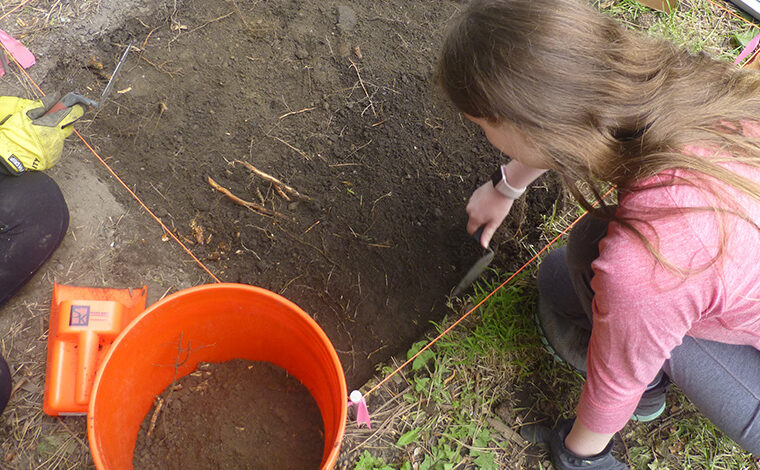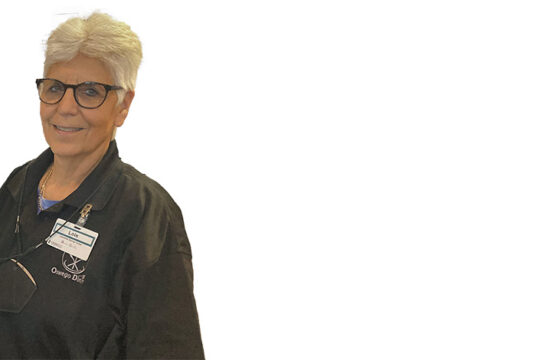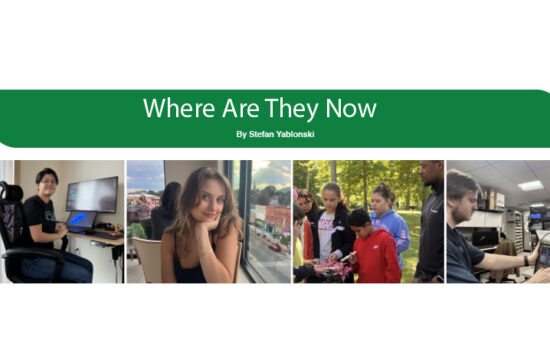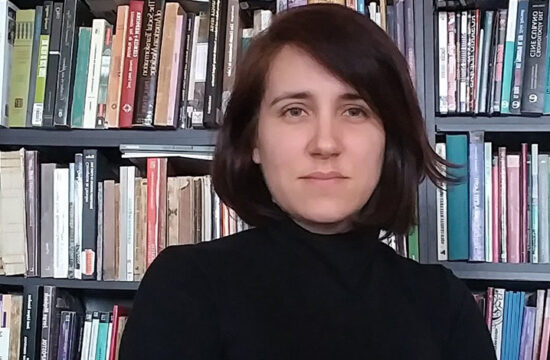By Ken Sturtz
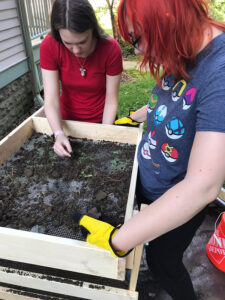 A passerby glimpsing the group might have noted the shovels, rakes and pickaxes and assumed they were landscapers, but it was history that brought them to this backyard.
A passerby glimpsing the group might have noted the shovels, rakes and pickaxes and assumed they were landscapers, but it was history that brought them to this backyard.
Over the summer a dozen SUNY Oswego students participated in the Richardson-Bates House Historic Preservation Field School, an archeological dig at a historic home in Oswego.
The program was the brainchild of anthropology professor and archaeologist Alanna Ossa who had several students doing volunteer work at the Richardson-Bates House. The house is an excellent example of an intact 19th century Victorian-era home. It was donated to the Oswego County Historical Society with nearly all of the original furnishings and serves as a museum.
One of Ossa’s students wanted to do a ground survey of the property for a capstone project and she agreed to help. They found several fragments of stoneware and earthenware in addition to some modern trash and thought they’d find more items if they dug.
The historical society was excited to host a dig. They had a blueprint of the property from the 1920s showing a rubbish heap in the backyard, where items were found during the survey.
Ossa wanted to give students some of the training outside the classroom that’s necessary to do professional archeology. She created a class and set up the field school. She received funding from the Shineman Foundation and Oswego’s Scholarly and Creative Activity grants as well as an individual donation.
Ossa hoped that if the group could find the old kitchen garbage dump it would provide new insight into the home’s inhabitants.
“We’re asking questions about things that people don’t think to record or talk about,” she said.
Most people don’t keep food diaries and if they do, they often lie about what they eat. So, the best way to learn more was to find the kitchen trash pile and reconstruct the history of the site and the consumption and discard behaviors of the inhabitants.
Over the summer the students surveyed the grounds again and mapped the areas they planned to dig. They cleared away rocks, weeds and a layer of pine needles and dug test holes to choose the most promising spots.
Rhiannon Bonawitz, who graduated in August, served as crew chief for the field school. She said the students marked out areas and began digging layers of dirt. The material was sifted through a quarter-inch screen and artifacts were bagged and labeled.
Unlike Bonawitz, the other students had never taken part in a dig. She said they were not expecting to find as much as they did.
“They were really excited, especially when they were finding pottery because it’s so striking,” she said, referring to pieces of blue and white pottery they discovered.
In addition to various ceramics, the students found old nails and pieces of metal. They recovered oysters (popular in the Victorian era) and clam shells (likely from Lake Ontario). From the bones recovered it became apparent the inhabitants had eaten steak, chicken, pig and deer.
“They were actually eating a fair amount of meat, which makes sense because they were rich,” Ossa said.
They also found shotgun pellets and a couple .22-caliber bullets, probably from a hunting trip.
But the most surprising discovery was the stone foundation of a small previously unknown structure. The 1920s blueprint didn’t show the structure, which was determined to be a privy.
“So, we actually found something completely unexpected,” Ossa said.
The privy was fairly shallow, had cast iron piping and a mechanism for emptying it. The students found a corroded penny at the bottom, which hasn’t been minted since the 1850s and helped date the structure. Ossa said the privy was probably from before bathrooms were added to the house in the 1870s.
At the end of the field school the students finished washing and organizing the recovered artifacts. Ossa and Bonawtiz are writing a report. The recovered items will be given to the historical society to display in their collection. Ossa said the whole experience will be invaluable for students who pursue a career in archeology.
“You need training in how to physically dig and record data and best practices, and the field school does that,” she said. “There’s just a lot of hands-on work that has to be done.”


